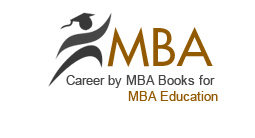Personality has many definitions in general opinions or in a psychologist opinions but personality words origin is from Latin word “personare” which meaning is “to speak through”. In the MBA book personality is defined as “relatively stable set of characteristics that influence an individual’s behaviour.”
In this chapter we understand about:
Term of PersonalityDeterminants of PersonalityVarious Theories of PersonalityDefence MechanismTheories of EmotionAbout the personality I have already explained that there are no limitations of its theory. Here is one of the theoreticians, Gluck writes about personality, “Personality is a pattern of stable states and characteristics of a person that influences his or her behaviour toward goal achievement. Each person has unique way of protecting these states.”
 Determinants of personality
Determinants of personality: depends on biological, cultural, family, social and situational factors.
Biological factors are related to heredity, brain, biofeedback, physical features etc. Like that cultural factors, family factors, social factors and situational factors are the determinants of personality.
There are four theories of Personality:Intrapsychic Theory: the theory was developed by Sigmund Freud and it emphasizes on unconscious determinate of behaviour. It runs among three elements of personality- id, ego and superego.
Type Theories of Personalities: The theory classifies the label or categories of people. The theory comes from people body types, thinking types, judgment types etc.
Trait Theories: The theories include five factors- Openness to Experience, Conscientiousness, Extraversion, Agreeableness, and Neuroticism. Trait theories can be defined in short term as OCEAN.
For the Trait personality theories some theoretician has also defined its. In the series Gordon Allport’s Personality Traits are on top. According to the Gordon Allport’s personality theory, “Personality traits are real entities, physically located somewhere in the brain.”
He defines his theory mainly in two parts:
Common Traits: the theory share or hold in common with most others in our own culture.
Individual traits: According to Allport, Individual traits have three elements- cardinal traits, central traits and secondary traits.
Reymond Cattell’s 16 Personality factors theory: Known as 16 P.F Test.
Unconditional Positive Regard Theory: It is developed by Rogers. He believes in therapist and thinks that unconditional positive regard gives the therapist.
Personality Characteristics in Organisation: As a manager if you going to hire in an organization, you would have to learn as much as possible about personality in order to understand their employees. Individual behaviour can be traced by these personality characteristics in an organization:
Locus of Control
Machiavellianism
Self-Esteem
Self-Monitoring
Positive/Negative Affect
Risk Taking
Type of Personality
In the book MBA which is provided by SMU defined emotion, “Emotion is defined as subjective feelings accompanied by physiological changes and usually associated with the change in perception, thinking and behaviour.
Many theoreticians have also defined emotions which are:James Lange Theory of Emotion: James defines emotion theory that felt emotion occur of the bodily changes.
Cannon-Bard Emotion Theory: He says, “Felt emotion and bodily reaction are quite independent of each other.”
Emotion shows facial expressions as:Anger
Fear
Sadness
Joy
Surprise
Disgust
Curiosity
Acceptance etc.
In the last we can say personality and emotion are guided by each other. And both are developed in a situational environment. Personality and emotion in an organization should be rational for the growth of organization as a manager.


